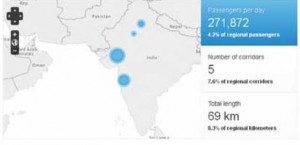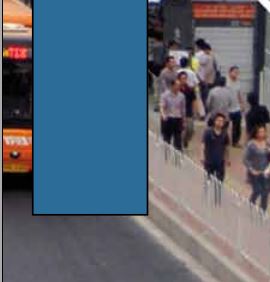 Three global organizations have teamed up to launch the most comprehensive, public database of bus rapid transit (BRT) systems around the world. The new site, http://BRTdata.org, was created by EMBARQ, the World Resources Institute’s center for sustainable transport, and the Across Latitudes and Cultures – Bus Rapid Transit Centre of Excellence (ALC-BRT CoE), in collaboration with the International Energy Agency (IEA).
Three global organizations have teamed up to launch the most comprehensive, public database of bus rapid transit (BRT) systems around the world. The new site, http://BRTdata.org, was created by EMBARQ, the World Resources Institute’s center for sustainable transport, and the Across Latitudes and Cultures – Bus Rapid Transit Centre of Excellence (ALC-BRT CoE), in collaboration with the International Energy Agency (IEA).
BRT is one of the fastest growing public transport systems. Approximately 134 cities worldwide, from Bogota to Beijing, have implemented BRT systems or priority bus corridors, serving more than 22 million passenger trips daily.
BRT is a mode of public transport that flexibly combines stations, vehicles, services, running ways and intelligent transportation system elements into an integrated system.
 “The new website provides reliable and up-to-date data to help researchers, transit agencies, city officials and NGOs understand and make better decisions to improve BRT and bus corridors in their cities,” said Dario Hidalgo, Director of Research and Practice, EMBARQ. “This is the first time that all of this publicly available data has been compiled in one place, but there is still more information available. We invite transit agencies and researchers to help us improve the knowledge base by sharing additional data to fill in the gaps.”
“The new website provides reliable and up-to-date data to help researchers, transit agencies, city officials and NGOs understand and make better decisions to improve BRT and bus corridors in their cities,” said Dario Hidalgo, Director of Research and Practice, EMBARQ. “This is the first time that all of this publicly available data has been compiled in one place, but there is still more information available. We invite transit agencies and researchers to help us improve the knowledge base by sharing additional data to fill in the gaps.”
The new website allows users to compare BRT systems and bus corridors in all 134 cities in 36 countries. The database includes 95 different indicators on system operations, design and cost, including metrics like the number of passengers per day, commercial speed, and the length of corridors.
There is growing interest and demand for BRT as cities seek low-cost, sustainable urban transportation solutions. As the number of BRT systems increases, it is important to have current, accurate and complete information about the existing and planned systems.
 The development of an online database was a joint data-sharing effort. EMBARQ and ALC-BRT CoE collected data mostly from Latin America, and the IEA contributed data from other regions.
The development of an online database was a joint data-sharing effort. EMBARQ and ALC-BRT CoE collected data mostly from Latin America, and the IEA contributed data from other regions.
“Previously, there was no single point of publicly accessible information about the worldwide BRT industry, and it was especially difficult to get an assessment of the industry’s size and how it was changing over time,” ALC-BRT CoE Director Juan Carlos Munoz, said. “We finally have the right tools to set standards for this dynamic industry.”
Using information from this dataset, IEA has estimated the energy and carbon dioxide (CO2) benefits of BRT implementation, and outlined several CO2-mitigation scenarios that rely in part on modal shift from light duty vehicles to public transit, including BRT. IEA plans to recognize the extensive potential of BRT in its upcoming biennial report, “Energy Technology Perspectives 2012,” calling for the total network length of BRT systems to double by 2020.
“BRT is growing in importance as a transit alternative,” said Tali Trigg, energy analyst at IEA. “This database will be helpful to planners, and is an essential component in calculating energy-efficient scenarios which inform decision makers of practical ways of transitioning to a more secure, sustainable and affordable energy future.”
Worldwide, 129 new corridors have been implemented since 2000, and 37 since 2010. Latin American systems move more than 50 per cent of global BRT daily passenger trips. As many as 25 Brazilian cities have 87 bus corridors, totalling more than 560 km, more than any other country. Of Asia’s 24 BRT systems, 18 began operations since 2006. Systems in 13 US cities together carry nearly 600,000 passenger trips each day.